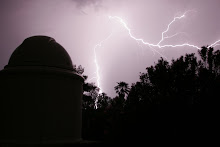
Look through a normal eyepiece and you usually see things in black and white. Some stars are colorful, but nebula and galaxies are pretty much always going to appear to be in "Greyscale" to most people's eyes.
Except, of course, when one places a color filter in the eyepiece. For example, put a red filter in, and suddenly the view turns from black and white to black and red. Filters do more than just change the color, though, they also block out other wavelengths, which can help to increase contrast or identify certain details. The same holds true for CCD imaging filters. Color filters are common but narrowband filters can really attenuate the light, allowing only a tiny slice of the electromagnetic spectrum to shine through.
Using CCD filters allows one to "map" the resulting image to any color. So for instance, Hydrogen-alpha emissions which are normally in the Red region of our vision can be represented by green instead. This can be desirable since other narrowband emissions, such as those arising from NII or SII, may also be in the Red. This "false-color" mapping is used in nearly every scientific discipline to help scientists translate data into a visual expression that simplifies analysis.
The commonly used "Hubble Pallet" maps SII as Red, H-alpha as Green, and OIII as Blue. Another common mapping is the "CFHT Pallet" (named for the Canada-France-Hawaii Telescope), which maps H-alpha as Red, OIII as Green, and SII as Blue.
For the image above I first created both Hubble and CFHT pallet images, then combined them into a single image. This resulted in some interesting colors that you don't often see in astronomical images of nebula. Yes, this is a false color image; if you could fly to the Veil East, you might see the structure but the colors would not be like this. Of course, that's just the way our brains are wired; perhaps if you lived on Gliese 582, your brain would in fact map these colors like this! Either way, I find all of the parts of the Veil Nebula to be quite fascinating for their incredibly intricate detailed structure. Click Here to See a Larger Version of this Image

No comments:
Post a Comment